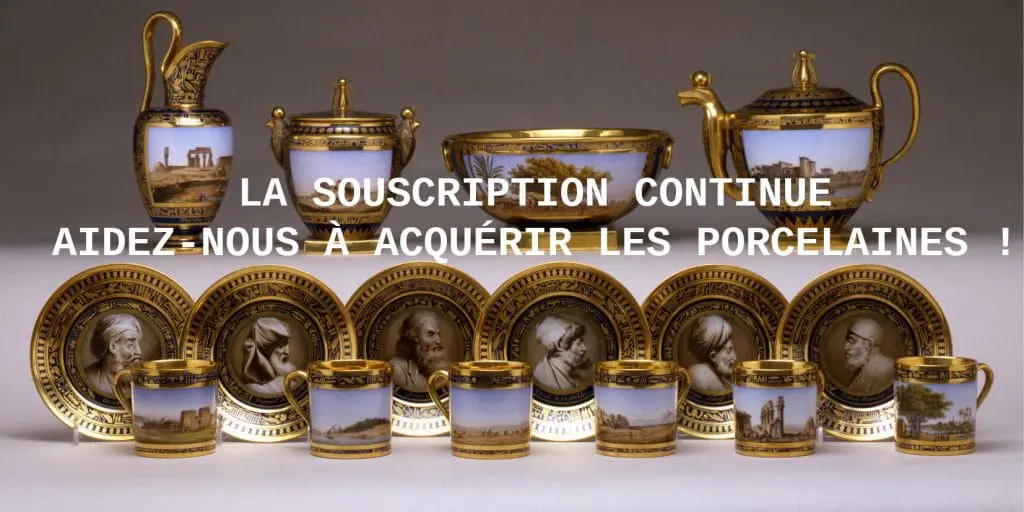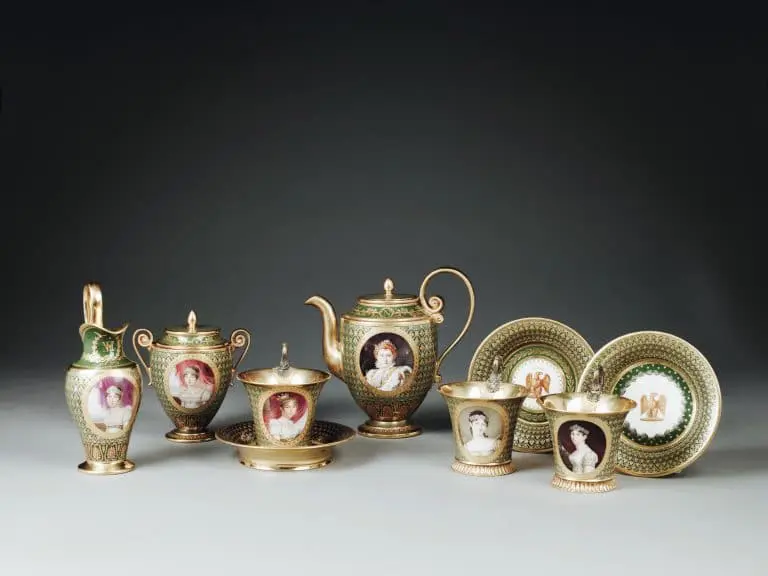
The ‘Cabaret des Princesses de la Famille Impériale’ (Cabaret Tea Set of the Imperial Family’s Princesses
Given in 1813 by Empress Marie-Louise to her mother-in-law, Letizia Bonaparte, this set features a unique iconographic collection. The teapot bears the effigy of the imperial couple. The sugar bowl is adorned with portraits of the King of Rome and his godmother Caroline, Queen of Naples. The milk jug honours Elisa, Grand Duchess of Tuscany, while the cups are decorated with portraits of the ‘princesses’: Hortense, the wife of Louis, Pauline, the wife of Prince Camille Borghese, and Catherine of Württemberg who became Queen of Westphalia by marriage to Jerome.
A vase decorated with a portrait of Caesar
This ‘fuseau’ vase is part of a pair intended to decorate the former pontifical residence of Quirinal, which became the imperial palace of Monte Cavallo in annexed Rome, ‘the second capital of the French Empire’ and prefecture of the French department of Tiber. The vase acquired by Fontainebleau features a figure of Julius Caesar. Its counterpart, with the figure of Augustus, has yet to be acquired.
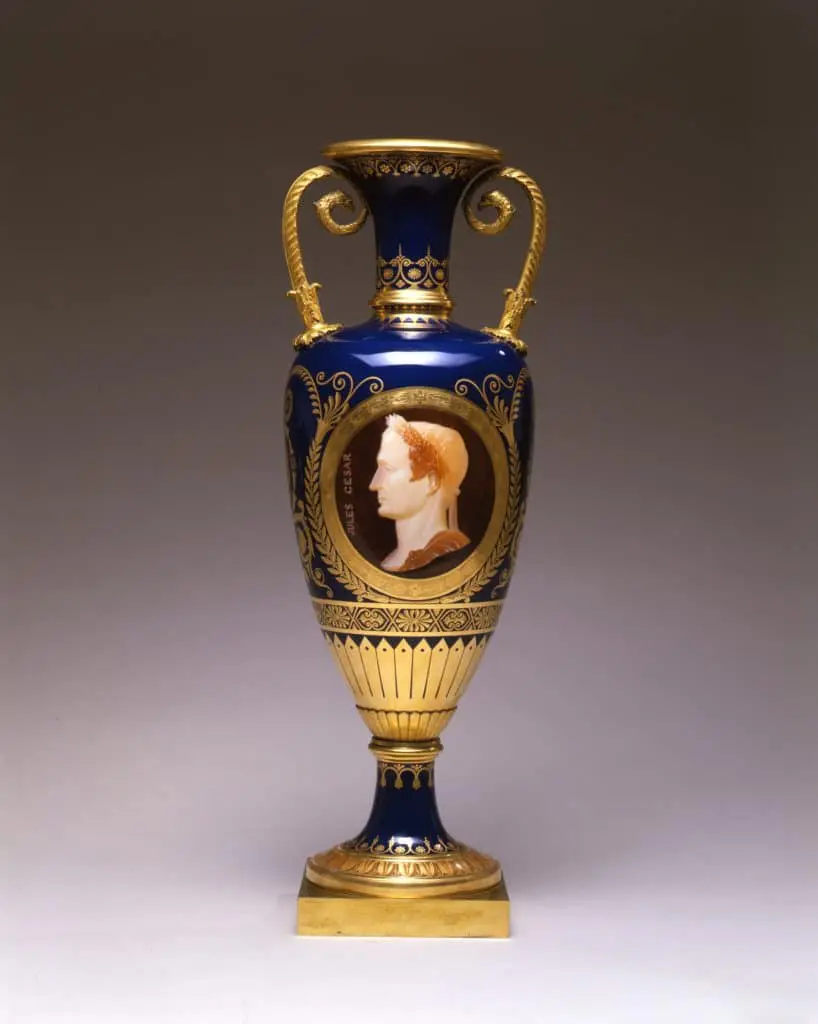
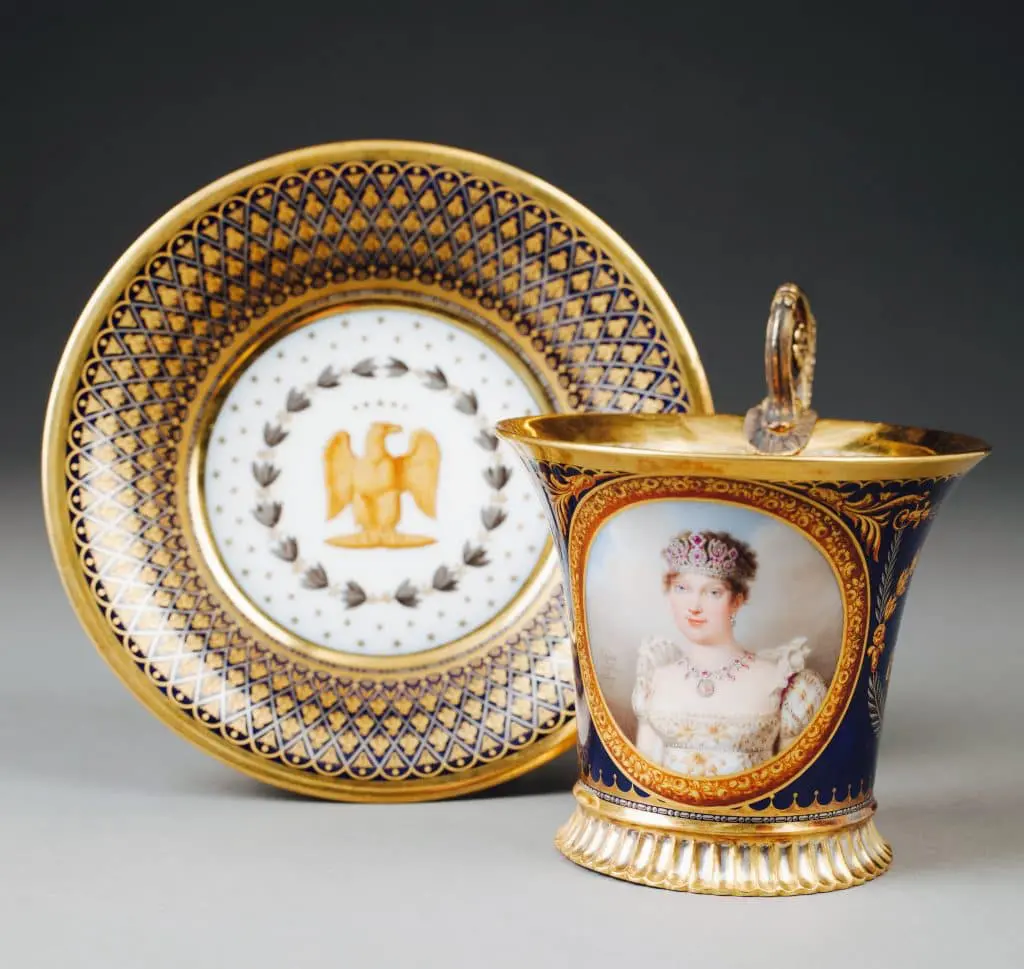
Marie-Louise’s gifts to her chamber women
New Year’s gifts from the Manufacture de Sèvres were offered by the Empress to her most faithful followers. In 1812, the Duchess of Montebello received a cup with a portrait of the Empress in full regalia and its saucer bearing the imperial eagle. As for the Countess of Montalivet, she received a semi-circular bowl depicting a horse race at the Champ-de-Mars, painted by Swebach.
Eight plates from prestigious services
The Napoleon I Museum’s ‘Hall of Splendours of the Imperial Table’, known for its display of the Grand Vermeil that the city of Paris gifted to the Emperor for his wedding and the special porcelain service, will be enriched with four plates intended for the two imperial palaces of the Tuileries and Fontainebleau.
Two plates, painted by Jean Georget, representing Mercury and Psyche, and Venus wounded in a hunt carried by Adonis, belonged to the Olympic service. Their shapes, described by the Manufacture de Sèvres as ‘new, elegant and rich’, adorned the table at the Tuileries for the wedding of Jerome and Catherine of Württemberg in 1807. This Olympic service was then given to Tsar Alexander I of Russia. Two other plates belong to the ‘Marly Rouge, Butterfly and Flowers’ service, Fontainebleau’s second service, which adorned the imperial table from October 1809. The Château de Fontainebleau is, understandably, working to reconstitute this service, seven pieces of which have already been reunited.
Four plates from the ‘Marly d’Or’ service bear witness to Napoleon’s hold on Europe and the neoclassical cultural context. This service, produced in Sèvres from 1805 onwards, had a very large number of plates available for occasional gifts. Two of the plates acquired by Fontainebleau are adorned with topographical views, relating to Napoleon’s domination of Germanic lands: the View of Boppard on the banks of the Rhine and a Waterfall in Napoleonshöhe Park. The other two plates highlight the weight of Antiquity in these times of neoclassicism, both as a living culture and as a model to be equalled. One represents a Sacrifice to Aesculapius, and the other Education.
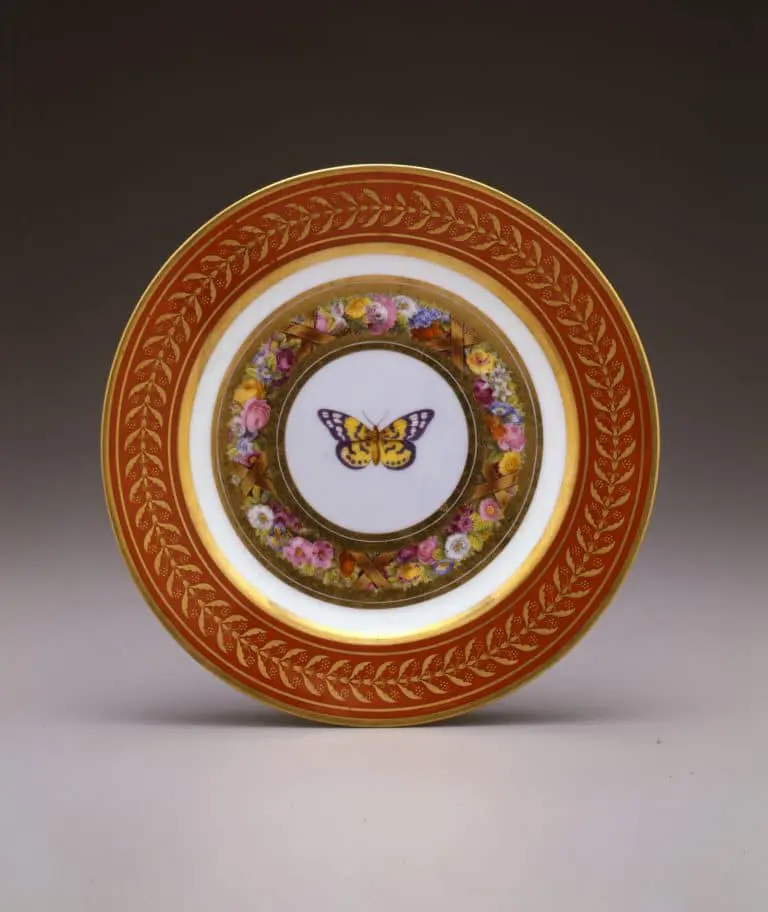
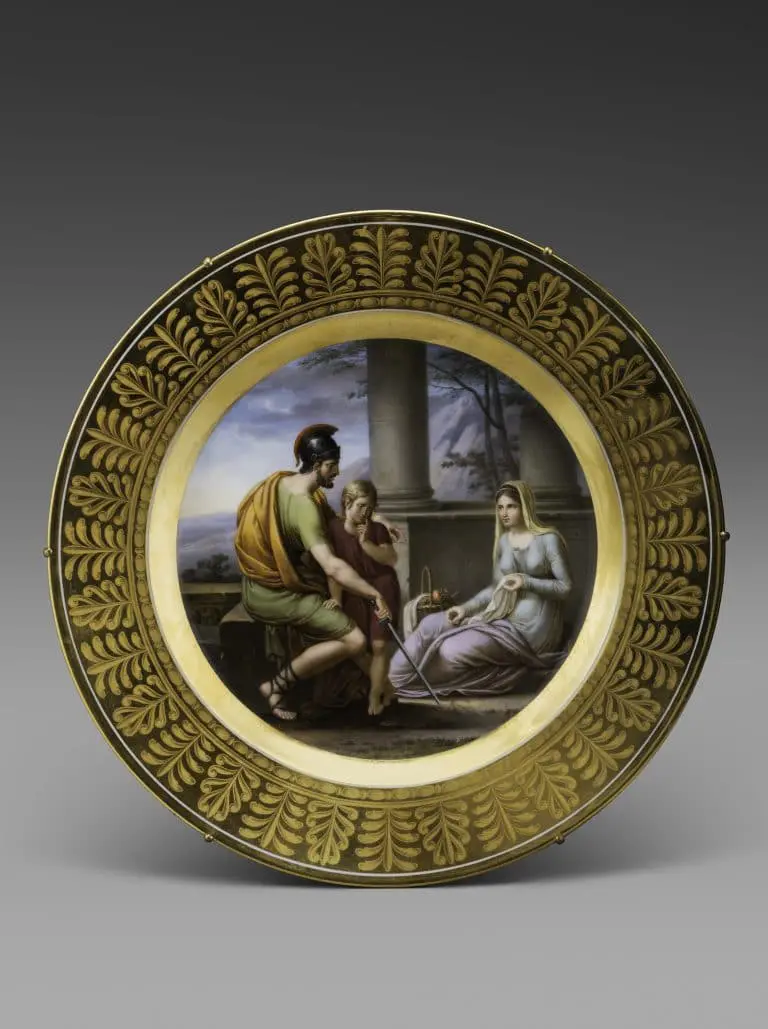
They support us...
Hermès, Mercurio SpA-Carlo and Polissena Perrone, Fonderie Roger, Aurignac Finance, Laplace, Galerie Marc Maison, Amis du château de Fontainebleau, Valérie Cerbourg-Renault, Claude Billmann, Lionel Sauvage and numerous other donors, with the support of Galerie Aveline and Camille Leprince.
